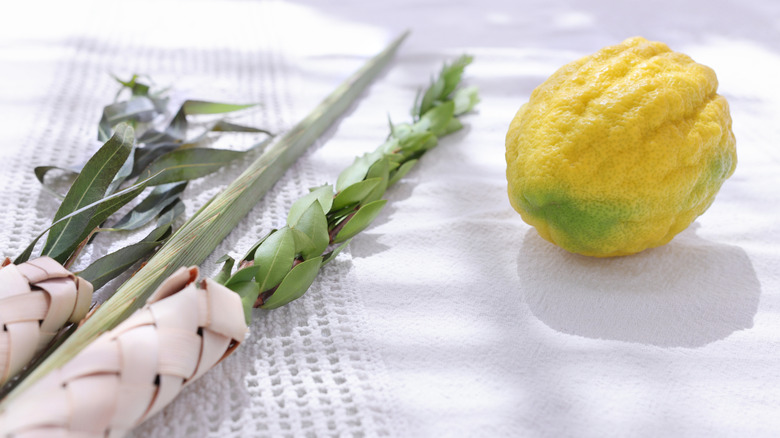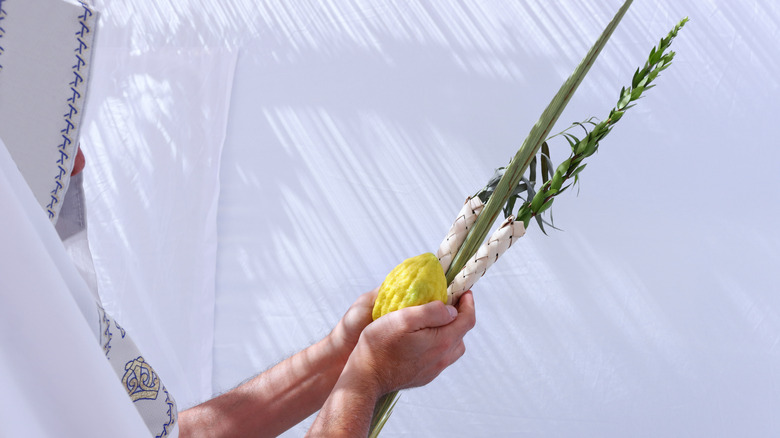What To Look For When Picking Out Kosher Etrog This Sukkot
A central aspect of the holiday Sukkot concerns the "Four Kinds" — different ritual plants; the most important is the etrog, an uncommon citrus fruit. Choosing an etrog can be challenging due to the many rules involved. To simplify, consider its appearance, grafting, condition, pitam (a woody protrusion), size, and shape.
An etrog should resemble a bumpy lemon (though it is not one). A pale yellow is ideal — though a bit of green or darker yellow is acceptable. However, most discoloration, such as black, white, or dark red spots, indicates the etrog is not kosher — unfortunately, you cannot just wash it off.
You can assess the structure both internally and externally. Internally, the etrog has a thick white layer beneath the peel and vertically-positioned seeds within the fruit. In contrast, lemons have seeds that lie sideways. Externally, the cone-shaped fruit is bumpy and covered with a thick waxy skin. Additionally, the pitam, found on most etrogs, must not fall off — if this is not present, the etrog is not kosher.
In terms of size, aim for one about the size of an egg. Lastly, ensure the stem (oketz) is also intact. The only acceptable reason for it to have fallen off is if the connection is not exposed, which keeps it kosher — but it's easier to just find a stem. You can buy from a rabbi-certified vendor to ensure the etrog meets kashrut standards. After Sukkot, you can freeze your etrog whole like a lemon while you decide how to make the best use of it.
Sukkot is a harvest festival heavy on symbolism
Sukkot is the Jewish harvest festival that starts on the 15th day of Tishri – typically in September or October — five days after Yom Kippur, the holiest and most solemn day of the year in Judaism. This celebration, one of the three Pilgrim festivals, honors the Israelites' wandering in the desert after their exodus from Egypt. At the heart of Sukkot is the ritual of the Four Kinds, which includes the lulav and etrog, palm leaves and a citrus fruit respectively, used in daily prayers. Sukkot translates to hut or booth, reflecting the festive spirit of building and celebrating in temporary dwellings over the course of the festival, which represents the temporary housing the Jews built while wandering the desert.
Synagogues typically offer Four Kinds sets — including a lulav, an etrog, three hadassim (myrtle sticks), and two aravot (willow tree branches). This is then used in a blessing where one shakes the fronds and etrog in each of the six directions (north, south, east, west, up, and down). These plants are heavy on the symbolism, each standing for a part of the human body: myrtle for eyes, palm for spine, willow for the mouth, and lastly, the oblong etrog for the heart, the sweetest of all.

